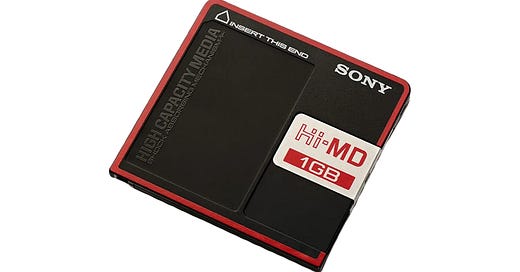When Sony introduced MiniDisc in 1992, it felt like a glimpse into the future. A rugged, re-recordable digital format designed for a world that wasn’t quite ready to leave analog tape behind. And for a time, MiniDisc found its niche with enthusiasts who wanted something smaller and tougher than a CD but better sounding than a cassette. Yet by the early 2000s, as MP3 players began reshaping the portable music landscape, MiniDisc was quietly fading. Sony’s answer to the changing times arrived in 2004 with a bold reinvention of the format: Hi-MD.
On January 8, 2004, Sony officially announced Hi-MD as a new standard for recording. Designed to be fully compatible with existing MiniDisc players, it introduced a new type of disc that could store a full gigabyte of data without changing the familiar MiniDisc size. Sony achieved this by improving how data was recorded. Instead of using the older method, Hi-MD used a more efficient system that allowed the format to fit more data into the same ph…




